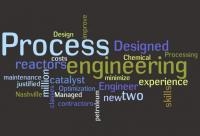Bambang,
Your choice of refrigerant is not proper. A refrigerant is preferred for a particular duty when its boiling point (not melting point) is less than the lowest process duty.
For example, if you wanted to cool a process down to -35°C, you would probably choose propane or propylene, which has a boiling point of around -40°C at atmospheric conditions, thereby having an approach temperature of 5°C. If you had a process that needs to be cooled to -90°C, you would choose a refrigerant like ethylene, which has a saturation temperature of about -100°C at atmospheric conditions.
Once you have selected the refrigerant based on temperature, you can calculate its mass flow rate. This will be based on how much cooling duty needs to be provided. In your case, it might be the amount of heat that leaks into the storage tank. The heat leak into the tank will lead to CO vaporising. This boil off gas will be condensed and put back into the tank. So the task for you will be to estimate the amount of liquid CO that is vaporising (and which will need to be condensed again) due to the heat leakage.
Remember: The refrigerant needs to be compressed and cooled, where it will condense. Not solidify. Then the liquid refrigerant is evaporated to achieve the cooling factor. If you are not comfortable with refrigeration, I would suggest you read a text book to read the fundamentals.
I understand from Kostas' post above that pressurised storage is not being considered.
For theoretical purpose, an option might be to use CO itself as the lowest refrigerant cycle to achieve a temperature of -190°C, with the storage being at slightly positive pressure to get enough approach temperature (For such applications, a 2°C approach might be reasonable). But then the problem lies in the fact that you will need to have further refrigeration cycles to reject the heat of the CO cycle into (typically termed as cascade refrigeration).
One link I found on internet for clarification purpose is
http://www.engr.sjsu...ion Systems.pdfCheck slides 2 and 3 in the above link for clarification of the idea.
For argument sake, considering pure refrigeraion, it might be like this: A CO refrigerant (cooling upto -190°C, the discharge pressure of CO compression being a bit less than 34 bar as per its critical properties). The CO refrigerant can be condensed using methane ( boiling point -161°C at atmospheric conditions). The methane cycle can be condensed at -82°C/45 bar according to its critical properties. The heat of methane cycle can be rejected into a ethane cycle, that into propane cycle and then to cooling water. The economics of the system might be very much skewed due to that particular approach.
Another point that you might want to consider is a mixed refrigerant cycle. (The refrigerant is a mixture of all the above pure refrigerants) and its composition adjusted for the requirement. Again, this topic might be a project in itself.
Edited by pavanayi, 21 January 2012 - 06:40 PM.
 iso-8859-1__phosg.doc 25KB
6 downloads
iso-8859-1__phosg.doc 25KB
6 downloads

 FB
FB












